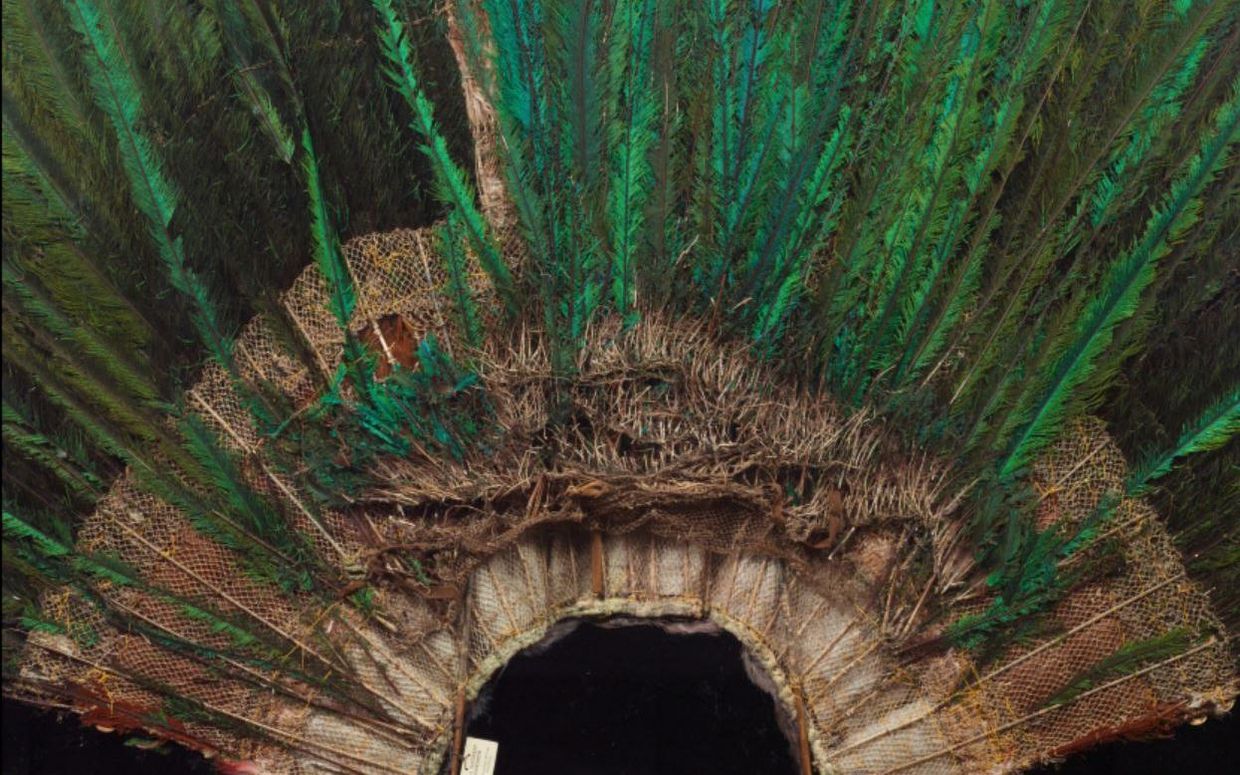Provenance and History
Before the early 16th century, many such headdresses were used in Mesoamerica, especially along the coast and in the south. They were associated with rulers, gods, priests, and warriors.
After the conquest of the Aztec Empire between 1519 and 1521, the Spanish sent many artifacts to Europe. Although lists of many of these objects have survived, the feather headdress cannot be identified among them. Thus, the description of the headdress as a possession of Moctezuma cannot be confirmed.
The headdress was first mentioned in writing in an inventory from 1596 of the collections of Ambras Castle in Innsbruck. There it is misleadingly described as a "Moorish hat with long, beautiful, gleaming, green glowing and golden feathers ...". Although the headdress was presumably acquired by Archduke Ferdinand II of Tyrol, there is no record of how he obtained it and when feather headdress came to Ambras.
In the early 19th century, the headdress was brought to Vienna and exhibited in the Lower Belvedere Palace. Around 1880 it became part of the collections of the newly-founded Natural History Museum. When, after 1928, an ethnological museum was established in the Neue Burg – today the Weltmuseum Wien – the headdress was transferred to it.

Although there once were many such feather headdresses from Mesoamerica, none of them, other than the one in Vienna, has survived.






